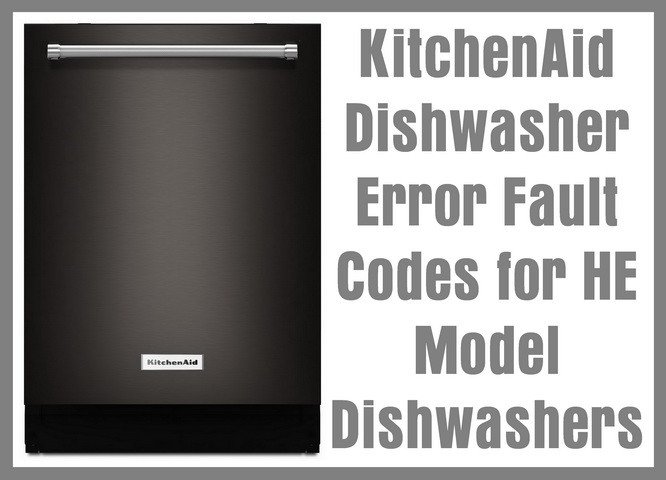
The “OE” error code on KitchenAid dishwashers stands for “Overfill Error.” It means that your dishwasher thinks there’s too much water inside. Imagine your tub overflowing—it’s similar, but in this case, your dishwasher is the tub. This code triggers when the system senses an excessive water level, which can halt your dishwashing cycle, leaving you with a load of dirty dishes and possibly, a bit of a mess on your kitchen floor. But don’t worry; understanding what’s behind this error can help you get things back on track.
Understanding the Overfill Error
So, why does your dishwasher think it’s got too much water sloshing around? The **Overfill Error** is generally caused by a problem with the system that’s supposed to regulate water levels. Think of it like your brain telling your hand to stop pouring water when a glass is full. If that signal doesn’t reach your hand, you’ll end up with a spill. The same idea applies to your dishwasher. When the sensor or float switch that monitors water levels doesn’t function properly, the dishwasher might overfill.
The float switch is essential here; it acts like a lifeguard for your dishwasher, keeping an eye out for rising water levels. Situations where hard water or debris interferes with its operation can lead to an OE error. Hard water deposits might be causing the float switch to stick, just like getting gum stuck on your shoe, making it difficult to function. Regular cleaning can often prevent this kind of issue, ensuring that your float switch can move freely and accurately signal when the water level is correct.
If your dishwasher’s float switch seems okay, there might be another culprit: the water inlet valve. If this valve is faulty, it could allow too much water into the machine, overwhelming the system and triggering the OE code. This is akin to a faucet that won’t stop running. Checking and possibly replacing the water inlet valve may be a necessary step to restore your dishwasher to perfect working order.
Troubleshooting and Fixing the OE Error
When faced with the ominous OE code, the first step is to ensure there’s no obstruction preventing the float switch from operating. This small piece is often found inside the dishwasher along the bottom. You might need to remove the bottom panel to access it, just like opening a trapdoor to peek inside a hidden compartment. Cleaning around this area can often resolve the error, as debris or mineral build-up can prevent its movement.
If cleaning the float switch doesn’t resolve the issue, it’s time to inspect the water inlet valve. The valve is usually located at the bottom of the dishwasher, behind the lower access panel. Make sure the dishwasher is unplugged before you poke around! If the inlet valve is functioning properly, it should open and close when directed by the control board, allowing the right amount of water in—but if it’s not, you might see an OE error pop up. Replacing a malfunctioning valve can often clear the code.
But what if you’re still getting that pesky error after checking both the float switch and the water inlet valve? Then it’s wise to check the dishwasher’s drainage system. A backed-up system might trick the sensors into thinking there’s too much water, similar to how a blocked sink can lead to overflow. Ensuring the drain hose is free of blockages and the sink’s air gap is clear can often do the trick.
Preventive Measures and Final Thoughts
Now that you’ve tackled the error, let’s talk about keeping it from happening again. Regular maintenance is key to avoiding these kinds of problems. Much like you’d regularly check the oil in your car, routinely inspecting the float switch and cleaning out any possible hard water deposits can keep your dishwasher in tip-top shape. A monthly cleaning cycle with vinegar can help prevent build-up and ensure smooth operation.
Moreover, if you live in an area with hard water, investing in a water softener might be worth considering. This can help reduce mineral build-up in your dishwasher, keeping it running smoothly, much like how a good conditioner keeps your hair tangle-free. Checking hoses and seals for leaks can also prevent unexpected overflows, saving you from the surprise and hassle of error codes in the first place.
If you find yourself repeatedly facing error codes, it might be time to consult with a professional. While DIY fixes are great, sometimes an expert’s eye can spot problems you might have missed. In the world of appliances, just like in life, having a little help from someone who knows their way around can make all the difference.